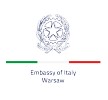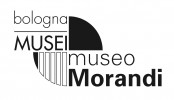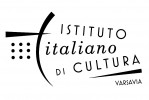Giorgio Morandi
18.07 – 05.10.2025 Giorgio Morandi
Zachęta – National Gallery of Art
curator: Lorenzo Balbi, director of MAMbo and Museo Morandi
Zachęta – National Gallery of Art in Warsaw presents a focused selection of works by Giorgio Morandi (1890–1964), a Bolognese artist whose approach continues to resonate with contemporary audiences. The exhibition spans his entire artistic journey, from the experiments of the 1920s to his full expressive maturity, marked by a progressive rarefaction of line and palette. His still lifes, silent landscapes and delicate floral compositions reflect a sustained exploration of perception and the representation of space.
Among the oil paintings, watercolours, drawings, and engravings on display, several pieces exemplify Morandi’s subtle yet rigorous visual language, where everyday objects become meditative forms through careful attention to light, volume, and composition.
The Still Life on a Table from 1920 (Vitali 57), with its rigorous structure and attention to the volumes of objects, aligns with the Valori Plastici movement, signalling a language far removed from metaphysical art. Still Life with Shells from 1940 introduces a theme that would keep returning throughout World War II, when Morandi explored fossil shells as elements of contemplation and abstraction. The celebrated still lifes of the 1950s represent the peak of his compositional synthesis, with bottles and vases standing out against neutral backgrounds, immersed in vibrant suspended light.
A central piece at the exhibition is Still Life (Vitali 985) from 1956, which fully embodies the essence of Morandi’s artistic pursuit. In this work, the synthesis of his expressive styles reaches new clarity: matter is transformed into pure form, the light caressing the surface monumentalizes the objects, giving them timeless aura. The compositional balance, formal purity, and firm, decisive brushwork make this still life an emblematic example of his poetics, where reality is sublimated into a dimension of absolute contemplation.
Morandi’s landscapes, equally essential and meditative, are represented in the exhibition through views of Via Fondazza, where his studio was located, and the landscapes of the village of Grizzana in the Bolognese Apennines. The latter served as a refuge and an inexhaustible source of inspiration for the artist, who observed the slightest changes in the light and colour in the surrounding landscape. His walks in the woods, in search of the “seventy shades of green”, reflect his attentive and meditative gaze on nature. His deep connection to the region is best seen in the Campiaro Hay Barns, recurring subjects in his works, an evidence of his exploration of light and form.
The Landscape from 1962 (Vitali 1287), with its cones of white emerging from the composition, stands out for its extraordinary visual synthesis, almost resembling a still frame from a movie. Alongside these, his delicate and suspended floral works offer a more intimate and lyrical dimension of his artistic oeuvre.
The exhibition also includes his watercolours and drawings, where the stroke gradually moves towards abstraction, reducing figurative elements to their purest essence. Lastly, a wide section is dedicated to his engravings – Morandi’s chosen medium – including notable works such as Bread and Lemon from 1921, which exemplifies his exceptional ability to work with chiaroscuro and the graphic texture to create images of intense poetic depth.
In an age marked by speed and an overabundance of images, reflecting on Morandi feels more relevant than ever. His work encourages us to rediscover the value of slowness, to see repetition as a form of exploration, and to focus on the creative process rather than the end result.
Lorenzo Balbi
director of MAMbo and Museo Morandi
Giorgio Morandi was born in Bologna on 20 July, 1890. He spent almost all his life working as a painter and etcher in a small studio-flat in Via Fondazza, which he shared with his three sisters. He never had a proper atelier but he lived and worked in a medium-sized room with a window overlooking a small yard, the subject of several of his paintings. That room also housed his bed, an old writing table, a drawing table, the easel, and all around, on narrow shelves, the arsenal of the simple things we see in his still lifes: bottles, containers, vases, jugs, kitchen utensils, boxes. In this studio-bedroom, the artist spent his time reflecting, working, and resting in an uninterrupted dialogue with his own reality. Except for trips to Venice, Florence, or Rome for exhibitions of his paintings, or for summer excursions to Grizzana on the hills of the Tuscan-Emilian Apennines, Morandi hardly ever left Bologna. Notwithstanding his extreme reserve, his paintings came to be known and sought-after throughout Europe and America. In 1930, “owing to his fame”, he became Professor of Etching Techniques at the Accademia di Belle Arti of Bologna, where he taught for 26 years. As early as in 1934, in a public address by Roberto Longhi, at that time Professor of Renaissance Art at the University of Bologna, Morandi was recognized as the greatest living painter in Italy. In 1949, he was featured in the seminal exhibition of Twentieth Century Italian Art at the Museum of Modern Art in New York, and in 1957 he was awarded the Grand Prize for Painting at the São Paulo Biennale in Brazil. Morandi died in his house in Bologna on 18 June, 1964.
The exhibition is organized in collaboration with the Morandi Museum | Settore Musei Civici in Bologna.
The Morandi Museum in Bologna holds the largest collection of Giorgio Morandi’s works, along with archival documents and study materials essential to understanding his artistic development. Housed in the former Forno del Pane building, alongside MAMbo – the Museum of Modern Art of Bologna, it offers visitors a chance to engage closely with Morandi’s world through a curated selection that reflects the continuity and depth of his creative practice.
Giorgio Morandi
18.07 – 05.10.2025
Zachęta – National Gallery of Art
pl. Małachowskiego 3, 00-916 Warsaw
See on the map
Godziny otwarcia:
Tuesday – Sunday 12–8 p.m.
Thursday – free entry
ticket office is open until 7.30 p.m.
Exhibition under the honorary patronage of the Embassy of Italy in Poland:

The exhibition was organised in cooperation with Museo Morandi | Settore Musei Civici Bologna:








